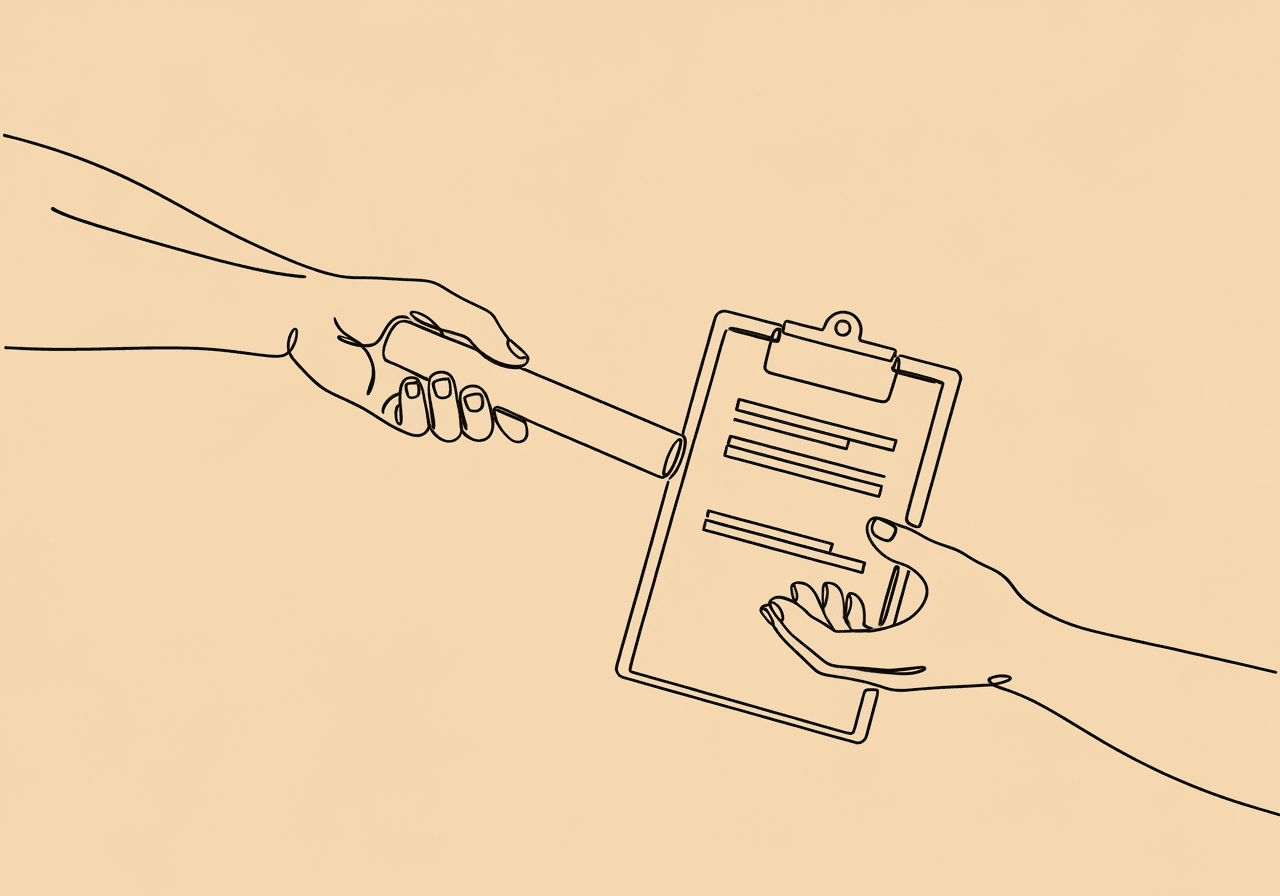BCBA RBT Competency Documentation: Step-by-Step Guide

In the fast-evolving field of applied behavior analysis (ABA), making sure Registered Behavior Technicians (RBTs) handle complex protocols competently isn't just smart—it's a BACB requirement that protects clients and keeps standards high. As a BCBA, you lead this effort, especially with tricky setups like multi-step behavior plans or natural teaching methods. Solid BCBA RBT competency documentation helps dodge ethical pitfalls, preps for audits, and helps RBTs improve under your watch.
This guide pulls from BACB rules to walk you through documenting RBT skills in tough situations. You'll cover prep work before training, the BST approach, checks after training, and ways to keep things on track. By the end, you'll have practical steps to boost compliance and skill accuracy.
Here are 5 key takeaways from this guide:
- Start with clear task breakdowns and baseline checks to spot skill gaps early.
- Use BST's four steps—instruction, modeling, rehearsal, feedback—to build reliable habits.
- Verify post-training mastery with direct observations and official sign-offs.
- Track ongoing supervision to catch drifts in complex procedures.
- Keep detailed records for audits, always tying back to BACB standards.
Pre-Training BCBA RBT Competency Documentation: Task Analysis and Baseline Checks
Let's think about the groundwork before diving into training on tough protocols. BCBAs need solid records right from the start to outline expectations and track growth. This setup helps RBTs grasp the protocol's pieces without confusion.
Break it down with a task analysis, splitting the protocol into clear, step-by-step actions. Take functional communication training, for example—it might involve prompt levels and error fixes. The BACB RBT Handbook (2025) calls for noting behavior definitions, reward plans, and setup details in a shared written outline. That builds a strong, checkable record of how the protocol works.
In my experience supervising RBTs, skipping this leads to messy starts. Now, run baseline accuracy checks to see where the RBT stands. Watch them in a mock or actual session, then rate their follow-through on a simple list. Picture scoring data entry during timed behavior tracking for tough cases.
What are the main moves here? First off, scan the behavior intervention plan (BIP) and pick out 5-10 actions you can see. Next, watch a session without coaching, jotting down slip-ups like wrong prompts. Finally, note the scores, date, and reasons in an accuracy log. Hold onto these records for seven years, just as the BACB requires.
These early records highlight weak spots and shape custom BST. Tie them into your overall oversight routine for smooth adherence, like in our RBT supervision records guide. Ever wondered how this prevents later headaches? It does, by nailing down details upfront.
The Behavioral Skills Training (BST) Model for Documentation: Instruction, Modeling, Rehearsal, and Feedback
At the heart of building RBT skills for complex protocols sits Behavioral Skills Training (BST). It's a proven method that stresses structure and real results. As a BCBA, log every part of BST to confirm skill pickup and RBT procedural integrity. BACB backs this for precise delivery in things like token systems or targeted rewards.
Kick off with instruction—give straightforward talks or handouts on the protocol. Jot down the date, time spent, main topics (say, "Covered fading in request training"), and any RBT queries. This fits BACB's rules on handing off tasks ethically under the RBT Ethics Code (2022). In practice, I've seen this clarity cut down on mix-ups right away.
After that, move to modeling: Show the skill live or on video. Capture the setup used and the RBT's first responses to trace their learning curve. It's like painting a picture of steady improvement.
Then comes rehearsal, where the RBT tries it out with you nearby. Feedback hits right after to fix issues on the spot. For high-stakes stuff like handling crises in behavior plans, rate practice accuracy (say, hitting an 80% mark as a common ABA example) and log notes such as "Fixed the wait on response bursts." Check out this guide on measuring procedural accuracy for more on thresholds like that.
How do you structure it? Start with scripts linked to the 20 core competencies. For modeling, tape it for later looks, nodding to BACB task E-04 on charts. Run 3-5 practice rounds in rehearsal, tracking when they hit the goal. End with feedback notes—praise the wins, correct the misses, and connect to growth areas.
Thorough BST notes avoid rule breaks and back up BACB compliance documentation. Need tips on giving feedback? Our BCBA RBT feedback strategies guide has you covered. This approach keeps things human—think of it as coaching a team to peak performance.
Post-Training Documentation: Accuracy Checks and Official Sign-Off
When BST wraps up, shift to post-training records that prove RBTs can handle complex protocols solo. Focus here on accuracy reviews to gauge steady RBT procedural integrity, ending with a formal okay. BACB demands this to sign off on all 20 task list areas before cert or assignment.
Do these checks by watching client sessions up close, with tools like step-by-step lists. In natural environment teaching (NET), rate things like timely prompts and solid data logs. The BACB Initial Competency Assessment Packet (2025) says these need to happen within 90 days of applying and show full mastery.
Log every review: dates, what you saw, and ratings. Aim for three or more sessions—it's a solid practice for reliable results, though not strictly mandated. If something's off, like uneven rewards in skill building, retrain and note the fixes.
For sign-off, you as the BCBA confirm readiness on the BACB form, with signatures and proof of skills like reduction techniques (task C-07). Keep it all for seven years to pass audits.
What tools work best? Build lists matching BACB areas, from data taking (A) to ethics (E). Watch and rate with a second observer for fairness. Sign off cleanly, avoiding any ties that could bias, per BACB rules.
This step links training to real work, lowering risks in advanced ABA. Grab templates from our BCBA accuracy checklist resource. From what I've seen in clinics, consistent checks build trust and cut errors over time.
Ongoing Supervision Documentation for Complex Procedure Maintenance
Keeping RBT skills sharp means steady oversight records, particularly for protocols that can slip, like those in behavior reduction. BCBAs handle at least 5% of monthly hours, including one direct observation each month, per the BACB RBT Handbook (2025) and ongoing supervision fact sheet. It locks in lasting accuracy and ethical habits.
Log supervision details: dates, formats (like live watches), and topics, such as checking discrete trial accuracy. For intricate work, plan quarterly tune-ups to match changing client goals.
Capture maintenance through notes on skill hold, pulling from spot accuracy tests. If accuracy dips below an acceptable level (e.g., 90%, a typical ABA benchmark), step in with focused BST and track the fixes. See this practitioner's guide on procedural accuracy for insights.
How to stay organized? Note hours with at least two in-person meets monthly, one one-on-one. Refresh protocols: Update BIPs and retrain on shifts, per task E-02 on updates. Prep for reviews by securing digital files for seven years.
This ongoing logging builds a top-notch team vibe. Blend it with integrity tracking from our BCBA treatment integrity guide. It's not just paperwork—it's what keeps protocols reliable month after month.
Frequently Asked Questions
Who can conduct the RBT Initial Competency Assessment?
A trained assessor like a BCBA or BCaBA, after the 8-hour supervision course, handles it. They must hold a current credential and link to the RBT's group, with no family ties or conflicts, as in the BACB Initial Competency Packet (2025).
What does the RBT competency assessment cover for complex protocols?
It tests 20 items in areas like data, assessment, skill building, reduction, and ethics, needing full show of ability. For tough protocols, it stresses BIP rollout, chart work, and honest reports, per the BACB RBT Handbook (2025).
How should BCBAs document BST sessions for RBT training?
Log each part—instruction, modeling, rehearsal, feedback—with dates, details, and accuracy ratings. It verifies mastery in areas like prompting for skills, following BACB rules and proven methods in the BACB RBT Handbook (2025).
What are the requirements for ongoing RBT supervision documentation?
Oversee 5% of hours monthly, logging dates, time, style, and topics like accuracy scans. Keep logs seven years with your sign-off to hit BACB ethics for complex work, as in the BACB ongoing supervision fact sheet.
Can the RBT competency assessment be completed remotely?
Mostly no—it needs hands-on proof for key tasks to check real accuracy, though role-play works for some like graphing. BACB pushes live reviews by a fit supervisor, detailed in the 2025 assessment packet.
What happens if an RBT fails a fidelity check post-training?
Give quick feedback and extra practice, then recheck until they nail 100% skill. Log every try and fix to stay BACB-compliant and back accuracy, per the BACB Initial Competency Packet (2025).
Strong BCBA RBT competency documentation anchors compliant, quality ABA care, shaping client gains and team responsibility. Tackle pre-training setups, BST rollout, after-training proofs, and steady oversight to handle complex protocols while meeting BACB rules like the 5% hours.
Research shows structured records boost RBT procedural integrity, cut ethics slips, and aid long-term skill hold—see this practitioner's guide on procedural accuracy. Put it to work: Review your setups with an accuracy list, plan monthly checks, and use digital storage. Pick one protocol this week to get rolling on full adherence.
For fieldwork ties, check our BCBA fieldwork records guide. Your careful work meets rules and equips RBTs for real impact.
Popular in Compliance & HIPAA
- 1
BCBA Procedural Fidelity Checklist: Essential H-6 Guide
1,2226 min read - 2
ABA Documentation Checklist: RBT Compliance Guide 2025
1,2139 min read - 3
RBT Renewal Competency Documentation Guide for BCBAs
1,1376 min read - 4
BCBA Service Discontinuation Ethics: BACB Guide
7396 min read - 5
BCBA Ethical Documentation Best Practices
6376 min read
Popular in Compliance & HIPAA
- 1
BCBA Procedural Fidelity Checklist: Essential H-6 Guide
1,2226 min read - 2
ABA Documentation Checklist: RBT Compliance Guide 2025
1,2139 min read - 3
RBT Renewal Competency Documentation Guide for BCBAs
1,1376 min read - 4
BCBA Service Discontinuation Ethics: BACB Guide
7396 min read - 5
BCBA Ethical Documentation Best Practices
6376 min read
Related Resources
Explore more helpful content on similar topics

BCBA Documentation Treatment Drift: Detection & Correction
Master BCBA documentation treatment drift to safeguard ABA client progress. Learn detection via fidelity checklists, objective recording of deviations, BST staff re-training notes, and follow-up audits for compliance excellence.

RBT Renewal Competency Documentation Guide for BCBAs
Master RBT renewal competency documentation as a BCBA with this expert guide. Learn the 45-day rule, BACB forms, attestation processes, and 7-year retention for audit-proof compliance and seamless renewals.

BCBA Mandatory Self-Reporting: The 30-Day Rule Guide
Navigate BCBA mandatory self-reporting with our comprehensive guide to the 30-day rule. Discover event categories, step-by-step documentation, and consequences to maintain BACB ethics compliance and avoid penalties.